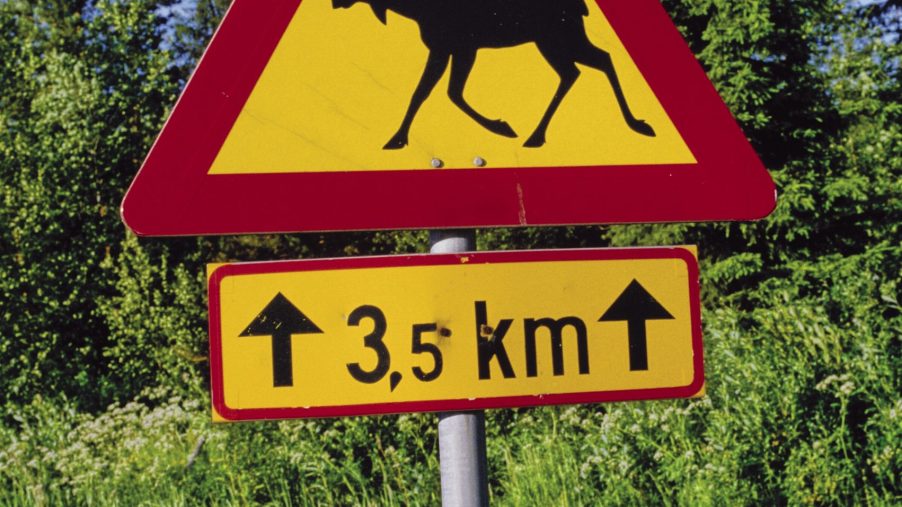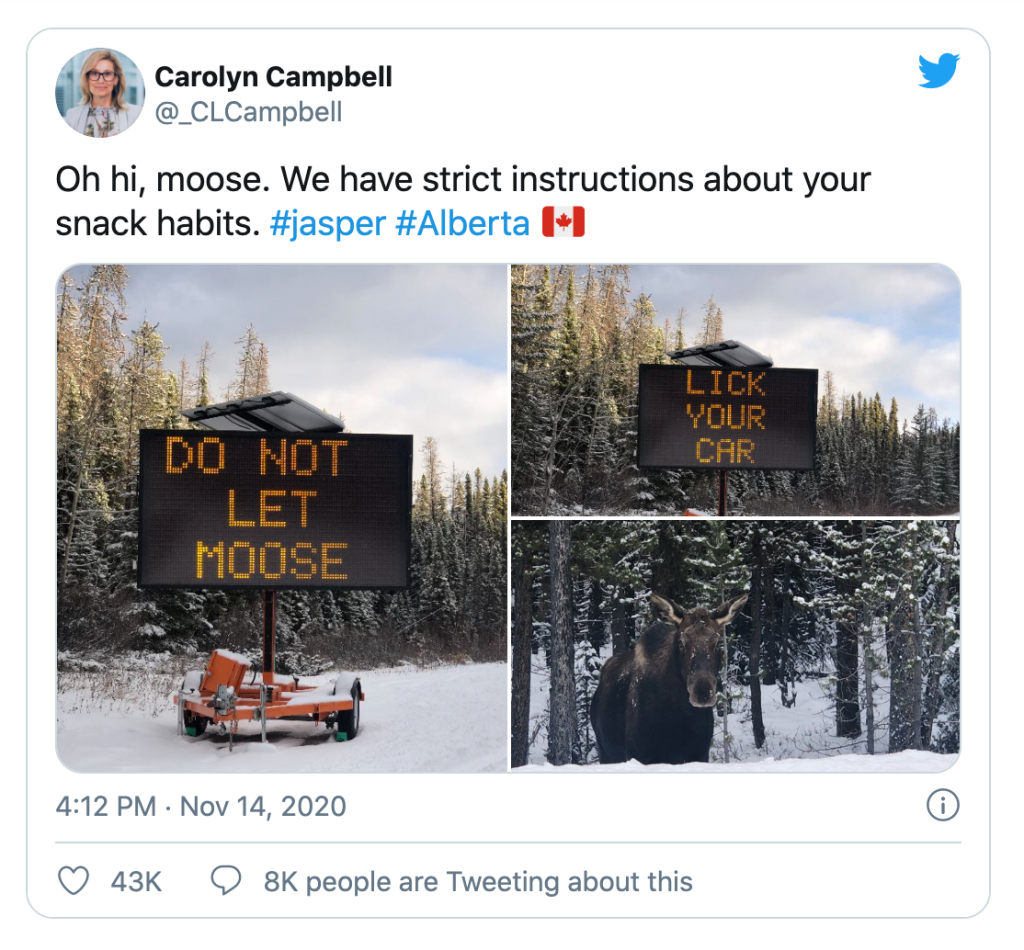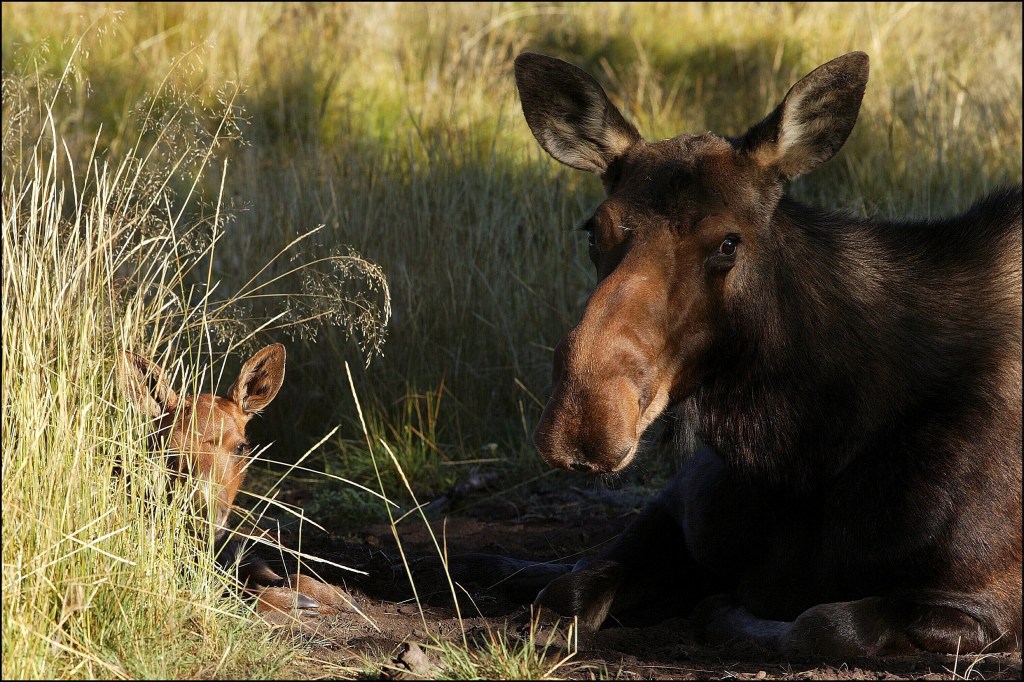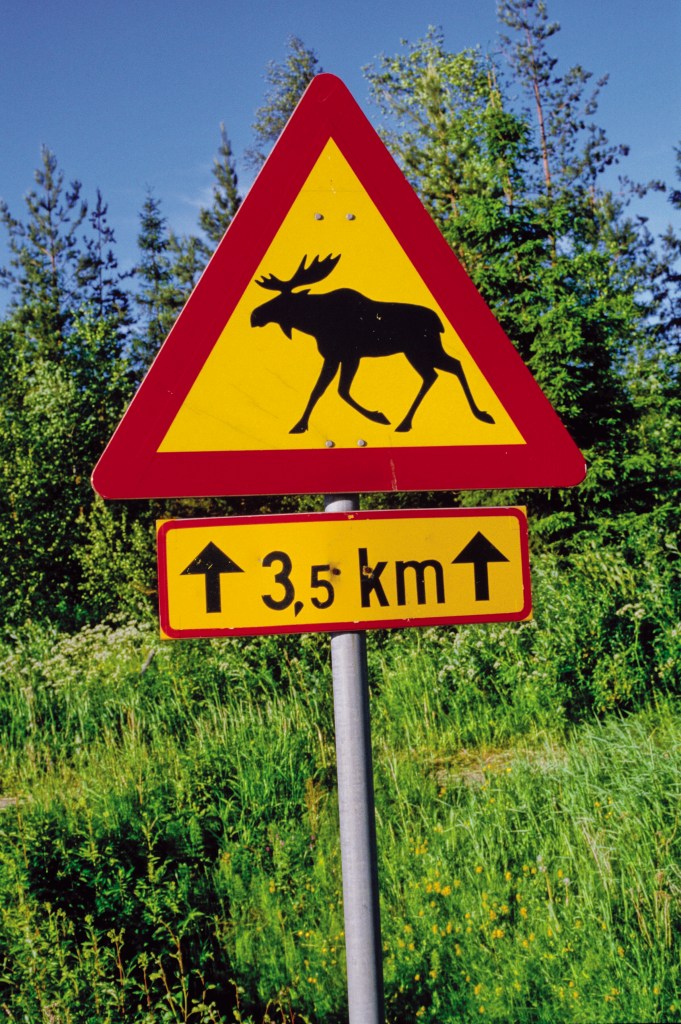
You’ll Be Fined $25,000 For Letting Moose Lick Your Car
We’re serious. Canadians are being warned that if they let the moose lick their cars they could be on the hook for $25,000. It is so serious there are road signs to remind drivers to heed the Canadian government’s warning. It’s no joke. If you’re planning a road trip through Canada you’ve been warned.
“Do not let moose lick your car” they warned

Images of these signs in Jasper, Alberta, began popping up on social media. “Do not let moose lick your car” they warned. Many obviously thought it was a prank but it is real. You see, moose love road salt. They have figured out over the years that car body panels provide lots of salt for their licking pleasure. And they can lick cars completely clean if given the chance.
So, what’s wrong with a moose getting a salt-high? Nothing, really. It is just that people letting them lick their cars begins to attract the moose onto roads and into traffic. This sometimes doesn’t end well for the moose.
Fines of $25,000 have been issued for violators
The other problem is that people observe the moose licking for salt and then they try to feed them and interact. There are countrywide laws against feeding or even disturbing wildlife in Canada. Fines of $25,000 have been issued for violators.
Especially in Jasper, the moose population has been growing rapidly. It is attributed to the decline of the wolf population. “This started as an occasional issue a few years ago and now is too common,” Jasper National Park spokesman Steve Young told Fitzhugh. “People are getting far too close and it’s perpetuated by the moose’s obsession with salt, accessing the vehicles.”
Birds have been killed feasting on salt in the middle of roads and highways

And it’s not just a moose problem. Many varieties of birds are also attracted to salt. Birds have been killed feasting on salt in the middle of roads and highways. And there’s more.
The melting salt is causing problems for ponds and streams. In the spring when the snow melts it carries the road salt into those streams and ponds affecting fish, salamanders, and frogs. It causes problems with hatching and fish growth. Streams with concentrations of salt reduce the weight of salmon by 25% or more.
Sand and ash from burned wood are promoted as alternatives to salt

Canada has instituted a code of best practices for cities and individuals to reduce salt usage. Sand and ash from burned wood are promoted as alternatives to the use of salt for better traction. People are asked to use salt only in key areas if necessary.
People are also advised not to try and push or interact in any way with a moose. Honking your horn usually scares them away. If a moose doesn’t take kindly to you pushing it they can charge, and they are fast. You don’t want 1,000 lbs of mad moose chasing you. Seriously, it can be a deadly encounter for you. Unlike the closely-related deer, moose are not afraid of humans. The horn gives you a safe distance from a large, angry, unafraid, charging moose.



